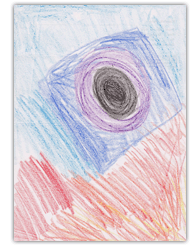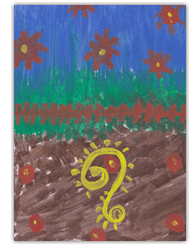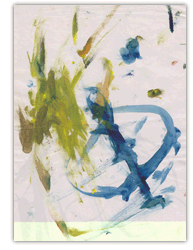Home > About Spring > Different Therapies
Different Schools of Thought
 Client – Centred Therapy By Carl Roger
Client – Centred Therapy By Carl RogerClient – Centred Therapy aims at providing a safe climate conducive for self – exploration, so that the client can recognize blocks to growth and experience aspects of self that were formerly denied or distorted. It also helps in movement toward openness to experience greater trust in self, willingness to be a process, and increased spontaneity and aliveness.
The relationship is of primary importance. The qualities of the therapist, including genuineness, warmth, accurate empathy, respect, and permissiveness and the communication of these attitudes to the client are stressed. The client uses this real relationship with the therapist for translating self – learning to other relationships.
Basic techniques include active listening and hearing, reflection or feelings, clarification, and “being there” for the client. Support and reassurance are often used when they are appropriate. This model does not include diagnostic testing, interpretation, taking a case history, and questioning or probing for information.
Gestalt Therapy by Fritz Perls
Gestalt Therapy aims at assisting the client in gaining awareness of moment – to – moment experiencing. This therapy challenges the client to accept responsibility of taking internal support as opposed to external support.
The therapist does not interpret for the client but assists the client in developing the means to make his or her own interpretations. The client is expected to identify and work on unfinished business from the past that interferes with current functioning. The client does so by experiencing past traumatic situations as though they were occurring in the present.
A wide range of techniques are designed to intensify experiencing and to integrate conflicting feelings. Techniques include confrontation, dialogue with polarities, role – playing, staying with feelings, reaching an impasse, and reliving and experiencing unfinished business in the forms of resentment and guilt. Gestalt dream work is very useful. Formal diagnosis and testing are not done. Interpretation is done by the client instead of by the therapist. Confrontation is often used to call attention to discrepancies. “How” and “What” question are used.
 Psychodrama By J. Moreno
Psychodrama By J. MorenoPsychodrama explores internal conflicts by acting out emotions and interpersonal interactions on stage. A psychodrama session (typically 90 minutes to 2 hours) focuses principally on a single participant, known as the Protagonist.
This is done using specific techniques, including mirroring, doubling and role reversal. The session is often broken up into three phases - the warm-up, the action, and the post-discussion.
During a typical psychodrama session, a number of clients gather together. One of these clients is chosen as the protagonist, and the therapist calls on the other clients to assist the protagonist's "performance," either by portraying other characters, or by utilizing mirroring, doubling, or role reversal. The clients act out a number of scenes in order to allow the protagonist to work through certain scenarios.
The second actor assumes the role of an “auxiliary ego,” which reveals hidden parts of the protagonist's behavior, by acting as him or her. Role - playing is another method, in which the client portrays a person or object that is problematic to him or her. In “soliloquy”, another technique, the client speaks his or her thoughts aloud in order to build self - knowledge.
This technique is helpful in handling emotional trauma and abuse.
Psychoanalytic Therapy By Sigmund Freud
Psychoanalytical Therapy believes that a normal personality development is based on successful resolution and integration of psychosexual stages of development. Faulty personality development is the result of inadequate resolution of some specific stage of psychosexual development. Id, ego, and superego constitute the basis of personality structure. Anxiety is a result of repression of basis conflicts, Ego defences are developed to control anxiety.
The main goal is to make the unconscious conscious. To reconstruct the basic personality. To assist the client in reliving earlier past experiences and working through repressed conflicts. Intellectual awareness.
The key techniques are interpretation, dream analysis, free association, analysis of resistance, and analysis of transference. All are designed to help the client gain access to the unconscious conflicts, which lead to insight and eventual assimilation of new material by the ego. Diagnosis and testing are often used. Questions are used to develop a case history.
Analytical Psychology Of Carl Jung
This theory includes the concept of introversion and extroversion introversion and extraversion, also the concept of collective unconscious and synchronicity.
Jung considered individualisation, a psychological process of integrating the opposites including the conscious with the unconscious while still maintaining their relative autonomy, necessary for a person to become whole.
 The theory believes that Neurosis results from a disharmony between the individual's consciousness and his higher Self. The psyche is a self-regulating adaptive system. Humans are energetic systems, and if the energy gets blocked, the psyche gets stuck, or sick. If adaption is thwarted, the psychic energy will stop flowing, and regress. This process manifests in neurosis and psychosis. Human psychic contents are complex, and deep.
The theory believes that Neurosis results from a disharmony between the individual's consciousness and his higher Self. The psyche is a self-regulating adaptive system. Humans are energetic systems, and if the energy gets blocked, the psyche gets stuck, or sick. If adaption is thwarted, the psychic energy will stop flowing, and regress. This process manifests in neurosis and psychosis. Human psychic contents are complex, and deep.The aim of psychotherapy is to assist the individual in reestablishing a healthy relationship to the unconscious: neither flooded by it.
In order to undergo the individuation process, the individual must be open to the parts of oneself beyond one's own ego. The modern individual grows continually in psychic awareness, which is attention to dreams, explores the world of religion and spirituality, and questions the assumptions of the operant societal worldview (rather than just blindly living life in accordance with dominant norms and assumptions).
This therapy uses dreams, active imagination and free association to help in being the whole personality. It is a completely natural process necessary for the integration of the psyche to take place. Individuation has a holistic healing effect on the person, both mentally and physically.
The work and writings of Jung from the 1940s onwards focused on alchemy. The alchemical symbols are used in the psychoanalytical process.
Transactional Analysis By Eric Berne
The focus of Transactional Analysis is on games played to avoid intimacy. The personality is made up of Parent, Adult, and Child Ego States. Clients are taught how to recognize which ego state they are functioning in within a given transaction. Games, rackets early decisions scripting and injunctions are key concepts.
The main goal is to assist the client in becoming a script – free, game – free, autonomous person who is capable of choosing how he or she wants to be. To assist the clients in examining early decisions and making new decisions based on awareness.
An equal relationship exists, with de - emphasis on the on the status of the therapist. The client contracts with the therapist for the specific changes desired; when the contact is completed, therapy is terminated. Transference and dependence on the therapist are de-emphasized.
Existential – Humanistic Therapy
The central focus is on the nature of the human condition, which includes capacity for self – awareness, freedom of choice to decide one’s fate, responsibility and freedom, anxiety as a basic element, the search for unique meaningless world, being along and being in a relation with others, finiteness and death, and a self – actualization tendency.
It stresses core human conditions. Distinctions are made between “existential guilt” and “neurotic guilt” and between “existential anxiety” and “neurotic anxiety”. Focus is on the present and on what one is becoming; that is, the approach has a future orientation. It stresses self – awareness before action. It is an experiential therapy.
The aim is to provide conditions for maximizing self – awareness and growth. Also the goal is to remove blocks for fulfilment of personal potential and discover freedom of choice by expanding self – awareness. It enables one to be free and responsible for the direction of one’s own life.
The therapist’s main tasks are to grasp accurately the client’s being – in – the world and to establish a personal authentic encounter with the client. The client discovers his or her own uniqueness in the relationship with the therapist. The humans – to – human encounter, the presence of the client – therapist relationship, and the authenticity of the here – and – now encounter are stressed. Both the client and the therapist can be changed by the encounter.
The approach can be very confrontational.
